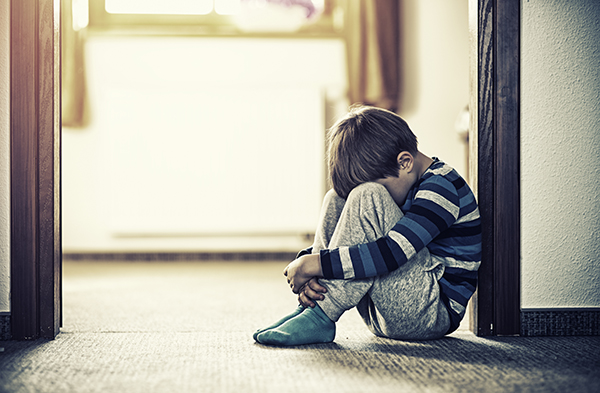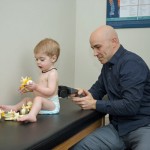
In life, each of us has only three things (three forms of stress) to contend with. Unfortunately, at least two of those stresses are hammering at us and are having a higher impact than ever before in history, and your kids are feeling the pressure and suffering in ways that we’ve never seen.
On any given day, there are a stack of physical pressures to cope with and adapt to. Some of these are good (a workout, a refreshing night of sleep, a walk outside…), and some of these stresses are more on the negative side (poor posture, medical interventions, birth trauma, falls, carrying heavy bags and backpacks…). For the most part, unless you are a high level athlete, these physical stresses haven’t changed much since I grew up on the late 70’s and 80’s. The other two stresses are an entirely different story.
Chemical stresses are higher than they’ve ever even had the chance to be, both in number and in magnitude. Many compounds and chemicals we are exposed to were either recently invented or have seen exponential increases in utilization. Each year, hundreds of new chemical compounds enter into our everyday life, often with untold longterm effects. Industry continues to excel and make new products to make our lives easier, faster, more convenient and their profits better. Most of these new compounds are not even required to be tested for safety. If they are tested, it is usually in isolation, instead of alongside and with the other compounds that these often work in tandem with to wreak havoc on our bodies and nervous systems. Other chemicals, like Monsanto’s glyphosphate herbicide (Roundup), have been around for a while, but are seeing exponential increases in utilization in the last 20 years. Research (and international government actions) are showing the effects of this increase in chemical utilization. Long story short, if a compound hasn’t been around for a few hundred years, we physiologically may have a very difficult time adapting to it, and there often aren’t ways to correlate their use with their effects. Our foods are soaked in chemicals (unless you choose organic). The vaccine schedule has more than doubled for the first 18 months of a child’s life alone. These chemicals are designed to create a change within the body (that’s why they are made), and they are tested individually for safety, but not in conjunction with the others on the full schedule. All of these chemical factors are part of the Allostatic Load – the amount of stress on a person at a given time. As allostatic load increases, a stress response is initiated, which we’ll get to in a minute.
Emotional stress is high now, but more importantly, different than ever before. Changes in the pace of life, personal computerized devices and computers, as well as the perceived daily significance of social media has triggered a different set of stresses or fears than we have had to adapt to before. If you are honest with yourself and ask, “would I like to be a kid/teenager these days?”, while taking this all into account, the overwhelming majority of adults would agree that in this realm especially, we had it far easier. We could play outside for hours (until the street lights came on), ride our bikes across town without our parents, play in the creek, trust our neighbours, spend time with our families, relax and just be kids. Things are lot different now. The 24 hour news cycle and social media are constantly spitting out reasons for us to be scared and feel bad about ourselves, and the impact on the calm, connected, coordinated efforts of our Central Nervous System is becoming astoundingly obvious.
In the past, the times of highest stress were mainly those where physical survival was threatened. When those stresses arose, we shifted on our ancient neurology (which has worked so well for us for so long!) and geared up a “fight or flight” response that allowed us to survive. We fought off the predators/enemies, or simply ran away to a safe place. This is the realm of the Sympathetic Nervous System (SNS), and it is phenomenally powerful in handling acute stresses, but awful at long-term growth, development and overall well-being.
After the threat to our survival passed, we could switch gears into the Parasympathetic Nervous System (PNS), which is the major control of healing, repair, growth, sleep, immune function, digestion, sex drive and reproduction and the ability to relax and be at ease in our environment. After we escaped the sabre-toothed tiger, we could think about where to find a mate, where and when we sleep or nap, what is for dinner and whether or not to poop. None of these functions can be effectively or efficiently activated if the SNS stress-response is initiated or continued. We have to escape the threat in order to reset to the PNS. But, in this day and age, the sabre-toothed tiger takes many forms, and is harder and harder to escape.
As physical stresses (Traumas), chemical stresses (Toxins) and Emotional stresses (Thoughts) accumulate, an adaptation has to take place to “keep on keeping on.” The Central Nervous System has to figure out how to cope. As stress builds within the CNS, which is housed inside the cranium and the 24 bones of the spine, an adaptation happens that is a lot like the breaker panel in your home. Stress on the system builds -> the breaker trips. The bones of the spine are supposed to move, providing valuable information to the brain about where your body is in space (called proprioception). Your brain combines this proprioceptive info with what we see, hear, smell, taste, feel and our vestibular (balance) system to get a good idea about any threats around us, and our chances of survival, or if we need to take evasive action to increase our chances. When the “breaker flips” in the spine, one or more of the vertebrae get stuck, and don’t move like they are supposed to (what we call a Subluxation). This reduces the proprioceptive input to the brain and diminishes the capacity at which the Central Nervous System can perceive our interaction with the environment. Our CNS does not like this, as it doesn’t know if we are safe or not, and it triggers activation of the fight-or-flight SNS response. This in turn down-regulates the PNS and its ability to regulate immunity, digestion, reproduction, calm, sleep, growth, repair, development… Until we can reset the breaker, and increase adaptability to stresses, we get stuck in an ongoing stress response with far-reaching effects.
Because of the processes described above, we see people of all ages with symptoms of all types seek care in our office. In newborns, the physical and emotional traumas of birth, as well as potential pharmaceutical interventions with mom or baby create Subluxations in the baby that cause irritability, difficulty to nurse properly, colic symptoms, gassiness and sleep issues, inability to move their head properly (dangerous for many reasons in newborns), and simply an overall fussy baby that can’t find ease and connect with mama and their new role in the outside world. In toddlers, we see constipation, sleep issues, ADHD, difficulty or delayed crawling or walking, ear infections, asthma and allergies, etc. In older kids and teens, the ability to concentrate in school is significantly challenged )ADHD and Sensory Processing Disorders are diagnosed often), and I.E.P.’s are often in use, making kids feel “dumb” or that “God made a mistake with me.” We also see immune challenges, bedwetting, digestion issues, difficulty with certain stimuli (clothing, bright light, loud sounds, crowds, transitions to new tasks) and overall sense of overwhelm. These symptoms simply morph into different forms as we age, and are often masked by different medications designed to simply cover up the issue (often with far-reaching and complicating side-effects).
This does not have to be the way. Life can be far easier for your kids. It is not too late.
If everything above makes sense, it also stands to reason that if we change the number of stresses, and change the adaptational strategies to the stresses that have already happened, we can make some serious changes to how the body works for a given child (or person of any age). Kids have a genetic window that is still open, and their potential for healing is phenomenal when it is fostered and uninhibited.
With any person, we review their history of the three types of stress, from pregnancy to childbirth to childhood to recent events. Then we use the best technology available to assess the current level of function of the spine and the nervous system. Finally, we lay out a tailored plan for that individual to regain the function that has been compromised. If we are on the same page, we set to work to re-establish proper function within the spine and nervous system. We re-assess along the course of the plan with the same computerized objective outcome measures we started with to make sure we are making the changes we need to.
In discussing your child’s health history (or yours), we do not judge any parenting decisions or lifestyle choices, but we do make highest efforts to be honest with you regarding the potential the effects of the choices we make. We can give insights in how to reduce the physical, chemical and emotional stresses your child has to contend with. In short, we give your child the chance to be the amazing, brilliant child they were intended to be by maximizing the function of the nervous system, which controls and modulates all that they will ever experience or undertake!
As always, feel free to reach out to us with any questions or comments. We welcome the discussion on what is possible for your family!

